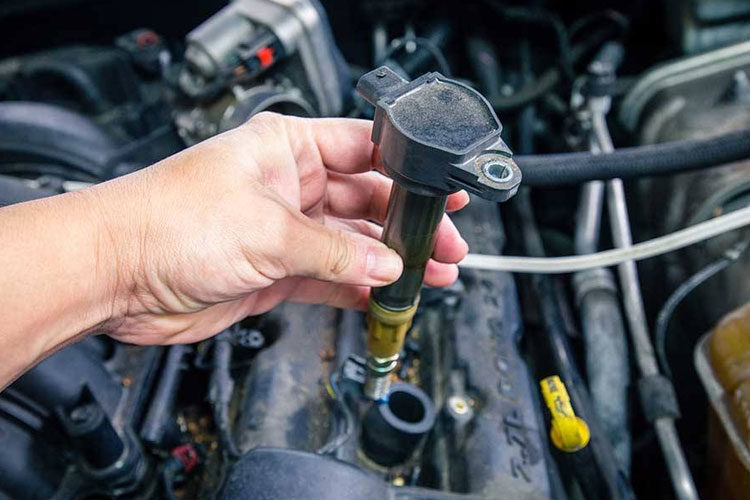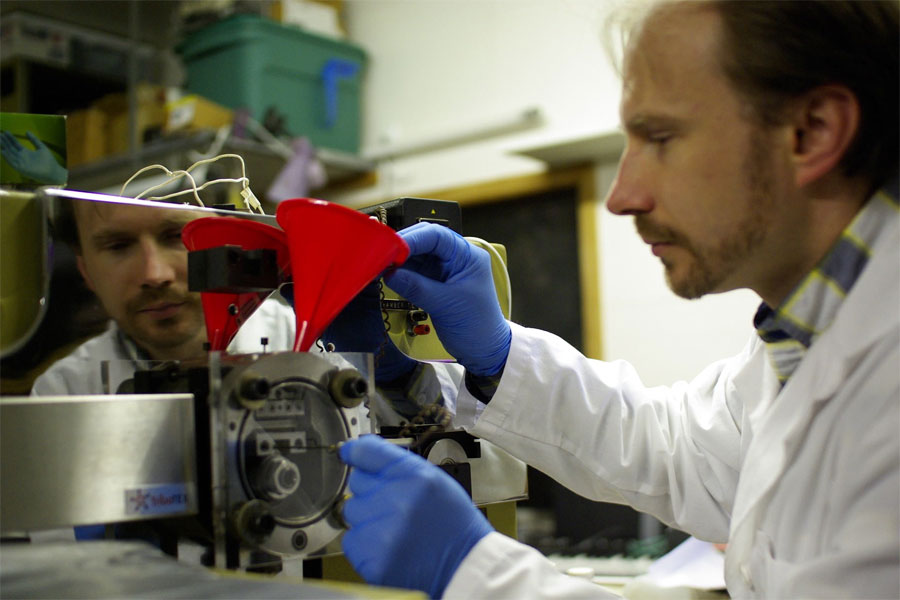An ignition coil serves as a compact electrical transformer in a vehicle. In simple words, the ignition coil has the power and the ability to convert 12-volt electrical current from a vehicle battery to at least 15,000 volts of electricity for the spark plug.
After that, the high-voltage current gets sent to the spark plug, and after that, the spark plug can be able to ignite the fuel so the start-up of the engine can perform itself.
There is always one ignition coil for every spark plug. In some of the cars, the spark plug and ignition coil are both connected with wires. On some vehicles, we will just have the ignition coil that is positioned above the spark plug without the cables.
In both ways, you will need suitable ignition coils to ensure that the engine of your vehicle starts up just fine.
Otherwise, having a faulty ignition coil can make your car susceptible to misfires and can increase the amount of fuel being consumed.
It is also good to know that a troublesome ignition coil can also be like a low voltage or an abnormally high voltage battery.
It will also cause a range of many other issues with the vehicle, and upgrading it to a new battery can cause a lot of problems to go away.
A lot of the batteries that are found in older cars can easily breakdown with time; If the battery is not reading at least 12.65 Volt, then it is a bad sign for the battery. When it is fully charged, then you know there are some issues with the battery.
Signs of a weak ignition coil
If a car is behaving intermittently and is also giving its driver not a smooth drive, then there might be an issue in the ignition system.
The reduced or weak ignition coil symptoms may easily vary depending on the severity of the ignition coil failure—some of the most common lousy ignition coil signs.
· Backfiring
It is usually caused by your vehicle can indicating the symptoms of the ignition coil failure in its starting stages. The car backfiring occurs when the unused fuel in the combustion cylinders of the engine gets out through the exhaust pipe.
If the problem is left unchecked, then it can cost you substantial repairs. The backfiring problem can easily be detected by the emission of black smoke through the exhaust pipe. The smell of the gasoline in the smoke can also give away the failure of the ignition coil.
· Poor Fuel Economy
This reason for this sign is a faulty ignition coil with a weak fuel economy. If your car is getting less mileage, then it could mean that an ignition coil failure has occurred.
· Engine Misfiring
It can a vehicle whose ignition coils have failed. If you’retrying to start the engine of such a car, it will result in engine misfiring, which sounds like coughing, sputtering noise. When driving at high speeds, spitting and jerking can be seen in the behavior of the car.
A vehicle with a failed ignition coil can also result in a vibrating motion when it is idling at a light sign or stops.
· Vehicle Stalling
The Ignition coil failure may also result in the stalling of the car. It can occur because of irregular sparks that are sent to spark plugs by a faulty coil. Your car can shut off completely when it is brought to the stop leaving you with the big trouble of it probably restarting.
· Rough idling, jerking, Poor Power
The sign is caused because of rough idling and the engine, jerking, or hesitating while speeding up. It will feel like when your driving that your car is missing some power.
· Check Engine Light On / DTC Code
Often, you will feel that the check engine light gets turned on in your dash. Usually, engine code P0351 (Ignition Coil – Primary/Secondary Circuit Malfunction) is what that shows up when it is scanned using a car diagnostic tool.
The scanning for the error code is simply the easiest way to troubleshoot an issue in the coil, so if you see the check engine light, just have a repair shop confirm or grab your scan tool.
· Engine Hard Starting
The hard to start the engine is a problem that can occur, primarily if your vehicle uses a single coil. If the loop has a malfunction, it will mean that the engine is cranking without sparks inside the cylinders.
Different ignition coil type
1. Conventional
This type has a breaker point-type ignition system that has been in use since the early 1900s. In this system, your primary circuit of the ignition coil will receive power from the battery through a resistor.
Full force is grounded through closed ignition points in the distributor. The current flows through the windings of the primary coil, which will create a magnetic field.
When the positions are opened by the rotation of the distributor cam, then the current’s electrical circuit gets broken, collapsing the whole magnetic field. After that, the force from the collapse crosses the windings of the secondary coil and will create an electrical current inside them. The current will flow to the distributor cap and eventually into the spark plugs, just in seconds.
2. Electronic
These types of ignition systems were popular in the mid-1970s and got developed to be more reliable and produce fewer emissions.
The type of ignition is very similar to the conventional method; it has the same configuration in the lower circuit from the loop.
From the battery to the coil, the primary channel will also be identical. But only instead of a distributor cam and points, the electronic system will use a pickup coil to signal the control module, and it will fire the ignition coil. Some automated systems have the ignition coils located inside the cap of the distributor.
3. Distributorless
In these types of ignition systems, which came out in the 1980s, and the design got more energy from the coils.
The differences that they do not use two loops; instead, there are three or more that are mounted together. As a result, each coil is responsible for firing either one of the spark plugs or a pair.
This system also uses the magnetic triggering device just to determine the speed of the engine and position of the crankshaft.
The triggering tool sends a signal to the engine control module or the control ignition module, which turns the energy straight to the coil.
Ways to check an ignition coil
The following are some of the tips on testing an ignition coil based on whether they are a COP(Coil-On-Plug) or CNP (Coil-Near-Plug).
Coil Type CNP
- If you want to run a test on an ignition coil, first, turn off your vehicle’s engine and open the hood. Pull or remove the spark plug wire from it (if your car uses coils of CNP).
- The wires usually start from the distributor cap and run to the spark plug. Try to use rubber gloves and insulated tools when you are working with these electrical components, or you may get a jolt.
- Next, attach the new spark plug to the spark plug wire (new or old spark plug to test coil sparks). Always use insulated pliers to get hold of the spark plug onto some part of the metal of the engine so that the threaded portion of the spark plug can touch metal.
- Use a fuse removal tool or needle-nose pliers to get rid of the fuse to the fuel pump to disable it altogether and get prepared to crank the engine. You will need an extra person to turn the key in the ignition because, with the pliers, you are holding the spark plug.
- After the engine is cranked, then look for the blue sparks forming along the spark plug gap. Only if you see blue flashes, then your ignition coil is correctly working.
- If you can’t see the sparks or if you see flashes in orange, then this is a sign of the malfunctioning of the ignition coil.
- After you’re done with the checking, disconnect the spark plug, and place it back in its hole, then reconnect the spark plug wires to it, and put back the fuse of the fuel pump.
Coil Type COP
- The engine gets started.
- Try to keep the engine running at idle speed.
- Then open the number one ignition coil bolt and then pull up the coil so you can see how well the engine runs.
If your engine’s condition changes back to rough idling, then that means the number one ignition coil is perfect.
After that, you can continue this step with the remaining reels one at a time until you find the culprit. Then you pull out a faulty ignition coil, the engine idle/condition should not get changed.
The replacement cost of an ignition coil
An average cost of a single ignition coil ranges from $75 to $300. However, the actual cost will depend on the model and make of your vehicle.
Another significant expense comes from the hourly rate for the labor. Most of the repair shops nowadays charge about $100 an hour to perform any kind of maintenance service on your car. The good thing is, replacing ignition coils can quickly be done in about 30-40 minutes for a mechanic to do.
It means you’re looking at roughly $60 for the labor costs that are linked with the job, but more significant if there is a minimum cost of labor.
If you have one ignition coil that you need to replace, then you’ll be paying anywhere from $135 to $360. if you have multiple ignition coils, then you should be looking at around $270 and $500 just to accommodate the costs of the extra loops and the additional time for labor.
Conclusion
There are plenty of easy ways to perfect your vehicle. You should always pay attention to the ignition system for the ignition coil; always keep a check on your spark plugs. It will save you a lot of your time and money in future repairs.













